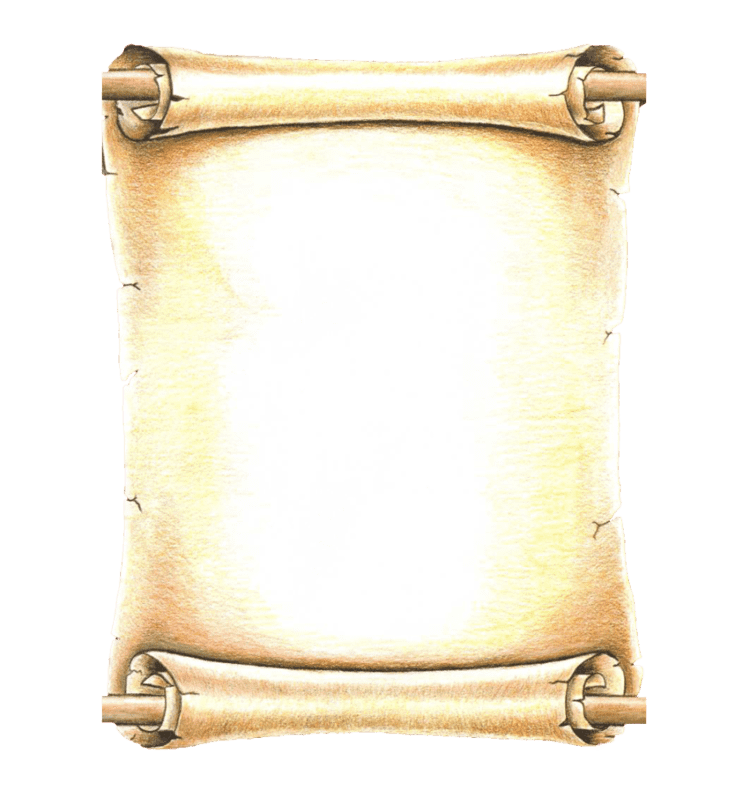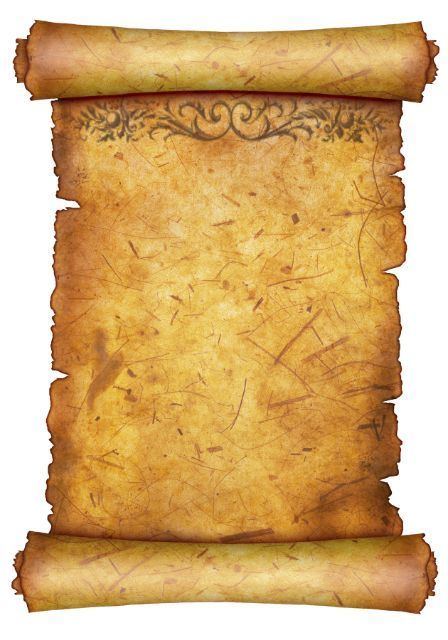 | ||
How to make a medieval scroll
A scroll (from the Old French escroe or escroue), also known as a roll, is a roll of papyrus, parchment, or paper containing writing.
Contents
- How to make a medieval scroll
- Structure
- History of scroll use
- Rolls
- Scotland
- Replacement by the codex
- Recent discovery
- Modern technology
- References
How to make a medieval scroll
Structure

A scroll is usually divided up into pages, which are sometimes separate sheets of papyrus or parchment glued together at the edges, or may be marked divisions of a continuous roll of writing material. The scroll is usually unrolled so that one page is exposed at a time, for writing or reading, with the remaining pages rolled up to the left and right of the visible page. It is unrolled from side to side, and the text is written in lines from the top to the bottom of the page. Depending on the language, the letters may be written left to right, right to left, or alternating in direction (boustrophedon).

Some scrolls are simply rolled up pages; others may have wooden rollers on each end: Torah scrolls have rather elaborate rollers befitting their ceremonial function.
History of scroll use
Scrolls were the first form of editable record keeping texts, used in Eastern Mediterranean ancient Egyptian civilizations.

Parchment scroll used by Israelites after Sinai was the first use of scrolls in the recording of literature before the codex or bound book with pages was invented by the Latins in the 1st century AD. Scrolls were more highly regarded than codices until well into Roman times where they were usually written in single latitudinal column.

The ink used in writing scrolls had to adhere to a surface that was rolled and unrolled, so special inks were developed. Even so, ink would slowly flake off of scrolls.
Rolls
Shorter pieces of parchment or paper are called rolls or rotuli, although usage of the term by modern historians varies with periods. Historians of the classical period tend to use "roll" instead of "scroll". Rolls may still be many meters or feet long, and were used in the medieval and Early Modern period in Europe and various West Asian cultures for manuscript administrative documents intended for various uses, including accounting, rent-rolls, legal agreements, and inventories. A distinction that sometimes applies is that the lines of writing in rotuli run across the width of the roll (that is to say, are parallel with any unrolled portion) rather than along the length, divided into page-like sections. Rolls may be wider than most scrolls, up to perhaps 60 cm or two feet wide. Rolls were often stored together in a special cupboard on shelves.
A special Chinese form of short book, called the "whirlwind book," consists of several pieces of paper bound at the top with bamboo and then rolled up.
Scotland
In Scotland, the term scrow was used from about the 13th to the 17th centuries for scroll, writing, or documents in list or schedule form. There existed an office of Clerk of the Scrow (Rotulorum Clericus) meaning the Clerk of the Rolls or Clerk of the Register.
Replacement by the codex
The scroll was largely replaced by the codex, a process which started almost as soon as the codex was invented. For example, in Egypt by the fifth century, the codex outnumbered the scroll or roll by ten to one based on surviving examples, and by the sixth century the scroll had almost vanished from use as a vehicle for literature. Unfortunately, scrolls were usually discarded after their contents were transferred to a codex. Most scrolls uncovered by archaeologists are found in trash middens and burial sites.
Recent discovery
The oldest complete Torah scroll was recently discovered in May 2013 by Professor Mauro Perani. It was stored in an academic library in Bolonia, Italy. It had been mislabeled in 1889 as dating from the 17th century. Carbon testing dates the prayer book to the year 840, which is 300 to 400 years earlier than the previously oldest known Torah scrolls from the 12th and 13th centuries.
The scroll is made up of 58 sections of soft sheep leather. It is 36 meters long and 64 centimeters wide. It was written in an archaic form of Hebrew, on pages of aged parchment. The text includes 100 Jewish blessings and discusses topics such as the apocalyptic tale of the End Times and the Passover Seder.
Modern technology
Modern technology may be able to assist in reading ancient scrolls. In January 2015, computer software may be making progress in reading 2,000-year-old Herculaneum scrolls, computer scientists report. After working for more than 10 years on unlocking the contents of damaged Herculaneum scrolls, researchers may be able to progress towards reading the scrolls, which cannot be physically opened.
